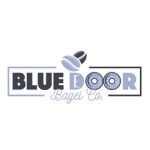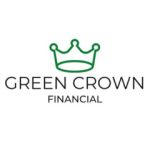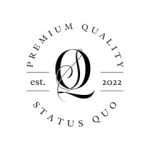
Insights

Business coaching gives you peace of mind. It aligns us together so you have a trusted advisor to talk to and gain wisdom from. There is almost nothing we have not encountered in business so take comfort in knowing that whatever your challenge or stumbling block is, we can help. Nothing we do is a one size fits all solution everything is individualized. It’s important to note that we are in the relationship business and developing trust and confidence is of the utmost importance.
Maximizing Staff Retention: The Role of Business Consultants and Coaches
Title: Maximizing Staff Retention: The Role of Business Consultants and Coaches In the dynamic landscape of modern business, one of the most crucial challenges faced
Navigating your Business Through Uncertain Times
Navigating through turbulent times is a hallmark challenge for businesses of all sizes and sectors. When faced with a volatile economy, a polarizing election on
The Power of Organization: Elevating Your Business and Valuing Your Time
Learn how organization can boost your bottom line. From leveraging tech to valuing your time, discover the key to sustainable growth. Start organizing now for a brighter business future.
Should I Scale my Business?
This is a question that I get very often. This question comes from small business owners, solopreneurs, and even owners of medium sized enterprises. At
8 Effective Ways to Enhance Your Decision-making Process
Making decisions is an integral part of our lives, both personally and professionally. However, the ability to make sound decisions can sometimes be challenging, especially
6 Tips for Business Growth
1. Evaluate your business model, generate annual revenue goals, and make necessary changes As a small business owner, you are probably always looking for ways
Unlocking Success: Chalifour Consulting Group’s Expertise in Business Plans
Introduction: In the dynamic and competitive world of business, a well-crafted business plan holds the key to success. It not only serves as a roadmap
Creating the Funnel
Everybody is an expert at something, well, almost everybody. If you really take a minute and look at your life, you are probably really good
Getting Creative
This past year, small business owners were especially impacted due to the COVID-19 pandemic. Many had to make the hard decision to shut their doors
Unlocking Success: Chalifour Consulting Group’s Expertise in Business Plans
Introduction: In the dynamic and competitive world of business, a well-crafted business plan holds the key to success. It not only serves as a roadmap
Title: Effective Marketing Platforms For Small Businesses
Introduction: Small businesses need to leverage various marketing platforms to expand their reach and connect with their target audience. While Google remains a dominant player,
Navigating the Current Mortgage Market and Low Inventory: Tips for Buying a Home
Title: Navigating the Current Mortgage Market and Low Inventory: Tips for Buying a Home Buying a home is an exciting endeavor, but it’s crucial to
The Power of Voting: A Game-Changer for Small Business Owners
Introduction: In a democratic society, the right to vote is not only a privilege but also a responsibility. While voting is usually associated with political
8 Effective Ways to Enhance Your Decision-making Process
Making decisions is an integral part of our lives, both personally and professionally. However, the ability to make sound decisions can sometimes be challenging, especially
Entrepreneurship: Passion, Learning, Planning, Belief, and Action
1. Work with Passion Being an entrepreneur is not for the faint of heart. It requires dedication, perseverance, and a strong drive to succeed. However,
7 Essential Accounting Tips for Small Business Owners
Running a small business comes with its own set of challenges, and managing finances is often at the top of the list. As a small
Unlocking Business Success with Chalifour Consulting Group’s Three-Prong Approach
In the fast-paced and ever-changing world of business, organizations often face complex challenges that require expert guidance to overcome. This is where Chalifour Consulting Group
Maximizing Returns: A Guide to Safe and Low-Risk Investments
Investing money wisely is essential for securing your financial future. While the allure of high-risk, high-reward investments may be tempting, there’s also a need for
Kickstarting Your Small Business: A Four-Step Guide to Success
Every great venture starts with a dream, but turning that dream into reality requires careful planning, strategic decision-making, and a lot of resilience. If you’re
What Percentage of Revenue Should a Small Business Spend on Marketing in Their First 3 Years of Being in Business?
Small business owners know just how important marketing is to their success. But when you’re just starting out, it can be hard to know how
5 Common Mistakes in Managing Business Funding
Obtaining business funding is a critical aspect of launching and growing a successful enterprise. Many small business owners struggle to acquire the required funds for
Staying ahead of your competition is critical!
Here are 5 ideas for you to LEARN then APPLY so you can ACHIEVE 1. Know Your IndustryThe first step to staying ahead of your
BE HONEST – Is your company running you?
Here are 5 ideas for you to LEARN then APPLY so you can ACHIEVE 1. List all your employees and under each employee list their
When is the right time to start your business?
There is no one answer to the question of when to start your own business. For some people, the right time is when they have
6 Tips for Business Growth
Evaluate your business model, generate annual revenue goals, and make necessary changes As a small business owner, you are probably always looking for ways to
Sales Mindset
Sales does not have to be complicated or require endless training. What it requires is the correct mindset.
Should I Scale my Business?
This is a question that I get very often. This question comes from small business owners, solopreneurs, and even owners of medium sized enterprises. At
Sales and Mediocrity
If you are leaving your sales to their own process then you have a mediocre sales force.
5 Ways to Limit Smartphone Use during the Work Day
Smartphones are one of the most exciting modern-day inventions, but they can also become a major source of distraction during the work day. Before COVID,
Keep on Keeping on
This past year has been hard for all of us, and Pew Research reports that 42% of US adults under the age of 50 reported
5 Ways Science Can Help Your Business
Science can be a great tool to improve your business, as it allows you to get objective, quantifiable evidence that you can use to make
Hiring – Ability vs. Personality
Managers have a lot to consider when hiring employees. Two of the most important aspects to consider are the candidates ability and personality skills. Employees
Mondays Don’t Have to Be Miserable
The feeling of waking up on a Monday is so iconic. Tired, still holding onto the bliss of the weekend, not quite ready to work,
9 Habits of the Most Successful People in the World
After a little research, here are 9 habits that the most successful people in the world incorporate into their lives daily: Wake up early Having
The One Minute Salesperson
Sales is an interesting career as it is one that is commonly learned not taught. Every salesperson needs to find their own approach rather than
How will COVID-19 Affect Travel in the Consulting Industry?
The COVID-19 pandemic has stopped travel in many professional industries, especially in the field of consulting. A report from Mckinsey & Company noted that US
Getting Creative
Sometimes you have to think outside of your normal realm in order to succeed.
Leadership, Culture and Retention
My business partner always says that for the most part a person does not quit their job, they quit their boss. If you are in a leadership position of any kind, this statement should immediately grab you and cause the hair on the back of your neck to stand at attention. If it does not then you should not be in a position of leadership – period.
Marketing Plans Vs. Business Plans
It’s very important that companies understand the difference between the two plans. I tend to use the river and pond comparison.
3 ways to work smarter!
Work smarter not harder. Learn to measure your results not your time.
Passive Income
To develop a solid stream of passive income takes an incredible amount of work, time, and often money. It falls under the same misbelief of get rich quick schemes or get rich over night seminars.
A Remote Workforce – Changing the Management Process
The question that employers and employees alike need to ask themselves is; Am I more productive, less productive or equally as productive as I was Pre-COVID?
Contentment does not mean Complacent
These days it seems like people jump from job to job (called spring boarding) all in the hopes for more money, benefits, prestige or a myriad of reasons.
Are you lucky or prepared?
Seriously, do you think Charles Branson is lucky? Jeff Bezos? Elon Musk? No, they are not lucky they are prepared
Creating the Funnel
Marketing is hard. You need customers to run a business without them you just have an office, idea, and skillset. No customers, no electricity.
The first person who speaks, loses
This may sound like a very aggressive and perhaps even arrogant statement but the truth of the matter is that it is true. I have found myself in countless negotiations, some as simple as buying a car and some with international corporations.
Do Not Talk Past The Close
Act like you have been there before and do not talk past the close.
Creating a Culture of Positivity
We work a lot as Americans but this does not mean that we have to be unhappy. Encourage positivity in the workplace and watch your company soar.
Who is next in line for the throne – 7 Step Guide
Be proactive in analyzing your companies succession plan even if nobody is ready to retire.
Write that report or have a beer on the deck
Working from home has become somewhat of a standard these days and for many people it is a stark new reality. The discipline required to work from home is not normally something that many people are born with.
How do I know when it is time to hire someone else?
Two schools of thought when it comes to hiring someone. Find out which is the better fit for your situation.
Comfortably Uncomfortable
You have to be like-able in order to be in sales. Become comfortable with being uncomfortable because that is where true confidence arises.
I called the Vice President but still no decision…?
Getting past the gatekeeper to the true buyer!
Pain or Pleasure??
There are primarily two motivating factors in our lives and they are pain and pleasure. I know this may sound a bit risque but it’s
The Knowing Doing Dilemma
Does the employee know the process and is choosing not to do it or is the employee unclear on the process. Find the true problem in order to move forward.
Money is not the root of all growth – Right?
We met with a client this morning who has endured many trials and tribulations in their business and have persevered through them all only to
The Intimate Negotiation
The Intimate Negotiation. The tactics you need to conquer workplace negotiations.
My sales department is very good… I think
Sales is not an easy profession. It requires training, diligence, patience and above all accountability. All these requirements culminate in a seasoned professional sales person.
One Customer
Many years ago I had a client that gave me the best feedback I had ever received and he did so without even knowing it. I was working with a company developing a new strategy for an unexpected surge in business.
Wealth Is Discretionary Time
I recently decided to purchase a boat and a slip for easy access all summer long. Now I am sure you have all heard the
Everyone should work in sales. Here are 4 Reasons why.
If you are jumping into the workforce and you do not know where you would like to begin, start in sales. The lessons and skills
I want to make money, who cares about the people…
In high school I had a friend that would always so “It’s all about who you know”. This phrase was tossed around so frequently that
Dress to Impress
The famous Zig Zigler once said “You cannot climb the ladder of success dressed in the costume of failure.” In short this means that you
Why so many people can’t close the deal
I have cold called 100 companies, 99 turned me down, I secured a meeting with one company, designed a presentation/pitch custom tailored for the prospect,
Sell me your pen
There is an age old question that seems to be asked in nearly every sales type interview. The question is “Sell me this pen”. The
Want more sales? Change the Payplan.
Was your last sales meeting lackluster and boring? Has your sales team numbers been lacking? Have you been wondering why? If any of these are
Don’t dream, set goals
Most people reading this blog are probably aware of, even if only acutely, SMART goals. This is an old adage in business that acts as
Johnny, your 8 year old buyer
Maybe you are new to sales looking to learn the ropes or maybe you are a sales professional looking for another edge. In either case
The 4 Top reasons you need a training process
Where do I begin… here are my top 4 reasons (Although there are many): 1. Acquire Top Talent & Retain Top Talent Believe it or
Trying to get everybody on board: The Key to Training
You have to get the absolute top management involved. You need uniform front starting from the top. If everybody knows that the owner, CEO, CFO,
Managing leads and customers with sticky notes? Time for a CRM?
Yes is the short answer, always. Look around at your desk right now, do you have more than 2 legal pads that you keep your
Taking my talents to South Beach
There are many factors to consider when expanding into new markets but the two primary thought points would be determining IF you can expand into
Don’t be the last one picked at recess.
Personal efficiency is a highly sought after attribute. Far too many meaningless tasks get in the way and stray us from the must do’s. Eventually
Is there really such a thing as WIN WIN?
I have been negotiating projects and contracts for many years now. I have the ability to win and get what I want. Well, most of
Be a Navy Seal QRT (Quick Reaction Team)
We all know that networking is a necessary strategy for success. Whether you are at a trade show, Chamber of Commerce meeting, or even at
What is the Rule of 7?
In order to grow your company and develop a strong market share you must have a strong brand. There’s an old marketing phrase called The
Sales Department? Check the Janitorial Closet in the back.
If I were to ask that question to the president or CEO of most companies they would say something akin to: “Well, they are a
Who cares about what you are selling?
Trust and relationships are an integral part of any sales cycle. Far too many sales people focus on the process of closing a sale and























